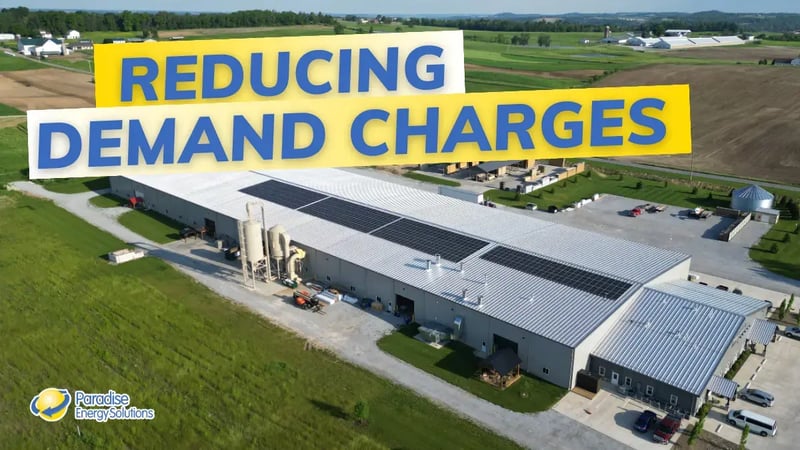4 Ways to Reduce Your Electricity Demand Charges

Demand Charges—what are they? How are they calculated, and how can you reduce them and save money?
Is your business or farm paying too much in-demand charges on your electric bill? Do you know what demand charges are and why you are being billed for them? Here are 4 ways you can reduce your demand charges, lower your electric bill, and save money.
What are demand charges, and why am I being billed for them?
Electricity is a unique and challenging commodity that needs to be generated, transported, sold, and consumed simultaneously. As a result, utility companies have to manage a delicate balance between the amount of electric generation and the amount of infrastructure required to meet their customer demand at any given moment.
Your business takes tremendous comfort in knowing that sufficient electricity is being supplied to your location at any given time. Utility companies are responsible for having the capacity to supply your business with the maximum amount of electricity that you would use whenever you demand it. They have to do this for all of their customers.
As a result, utility companies need to have enough standby equipment, such as transformers, substations, and generation facilities, to meet all of their customers’ demand. Utility companies assess demand charges to help offset this very expensive standby capacity.
How are demand charges calculated?
Demand charges are typically applied to large commercial, agricultural, and industrial customers only. However, some utility companies also apply demand charges to residential customers.
Demand and demand charges are analogous to bandwidth from your internet provider. How much bandwidth or capacity do you need for your electric needs?
Utility companies typically calculate your demand based on 15-minute increments of the highest consumption from your previous month’s usage and then multiply that by a pre-defined rate to calculate your demand charges. For example, if your utility company charges $10 per kilowatt per month for demand, and your peak 15-minute increment usage is 75 kilowatts, you will be billed $750 in demand charges.
Your demand charges are in addition to your customer charges, distribution charges, and energy supply costs. For many businesses, demand charges can make up a large portion of your electric bill.
4 ways to reduce your demand charges
1. Optimize your company’s energy use
The first step is to begin to understand when and how you use electricity. Your utility company should be able to provide you with a detailed breakdown of your energy consumption throughout the month.
Do you turn on most of your high-consumption loads at the same time every day? If so, this could be driving up your demand charges.
Could you use timers and sensors to automatically turn devices, lighting, and air off when not needed? Can you optimize start-up time, power-down time, and equipment sequencing? Energy use optimization strategies are the first step in reducing your demand charges.
2. Sign up for load control programs offered by your utility company
Many utility companies offer programs to lower, offset, or eliminate demand charges. Most of these programs require you to agree to allow the utility company to manage your loads during peak times. For example, a poultry farmer may be forced to use his diesel generators during peak times as opposed to pulling electricity from the utility company.
These programs help utility companies lower their costs during peak times. If your business has the flexibility to switch to an alternate energy source during peak times, then these programs could prove beneficial and cost-effective.
3. Invest in a solar panel system
If most of your electric demand is during the day, then a solar panel system has the potential to reduce your demand charges.
A solar system generates electricity from the sun, allowing your business to use solar-generated electricity as opposed to utility-generated electricity. If, however, your demand spikes on a cloudy day or in the evening, you will be charged demand charges accordingly.
4. Invest in an energy storage solution
Investing in a battery storage solution allows you to store energy generated from your solar system, which can be used during peak times or whenever there is a spike in energy.
Energy storage solutions are a great way to reduce demand charges, but they require a substantial upfront investment and ongoing maintenance.
Do you need help reducing your demand charges? Our team of solar consultants is ready to help. We'll review your demand analysis and help you determine the best cost-saving solution.




